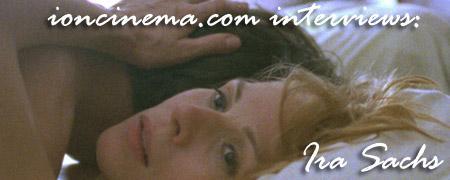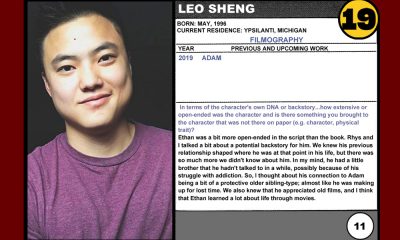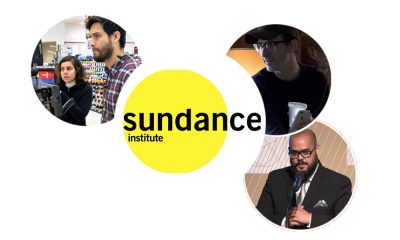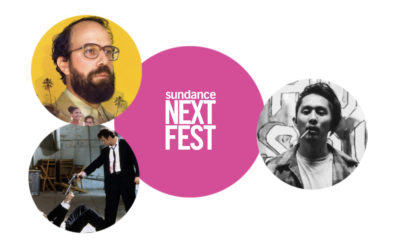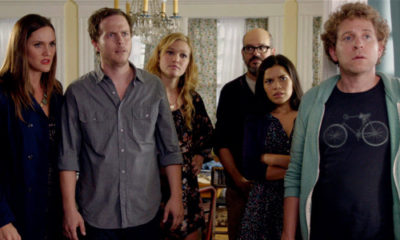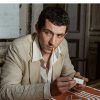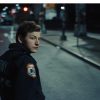Retro IONCINEMA.com
Interview: Ira Sachs
When I was asked by my editor to go see Forty Shades of Blue, I wasn’t that enthusiastic about it. I didn’t much care that it won the Sundance Grand Jury Prize and the subject matter didn’t appeal to me. Then I had the pleasure of viewing the film and I left the theatre clapping, something I rarely do. Then I had the pleasure of interviewing Ira Sachs, who turned out to be a well spoken filmmaker who is able to clearly express his ideas verbally as he does visually with his films. Then I went back and watched The Delta and his short films Lady and Get it While You Can: My Father in Moscow to get a grasp of his work and I could see a filmmaker who progresses and who will probably continue to progress.

Justin Ambrosino: Do you think you would have been able to make this movie in your early twenties?
Ira Sachs: In my early twenties I hadn’t yet gone through psychoanalysis and I think that psychoanalysis has been a really important part of me understanding other people. Bad psychoanalysis would have had me only understanding myself, but when psychoanalysis is a success you also understand other people. Analysis is a sort of process you go through when writing.
JA: Let me rephrase my question, would have wanted to have made a film like this in your early twenties?
IS: I made a short film in ’89 when I was in my early twenties called Vaudeville. I think it’s a bad homage to John Cassavetes because at that time I had seen a lot of Cassavete’s movies and I said I want to make a film like that and that’s not good. Now, at this point in my life, I’ve had a lot of life experience, I’ve thought a lot about film and I’ve made a few films so I feel like I am finding my own voice.
JA: Are you embarrassed by your earlier films?
IS: Well my first film, The Delta, is a film that a lot of people have some really strong responses to. Some didn’t like it saying it was slow, boring, dark, but then I got the sense that it meant a lot to other people. I think it sticks with certain people in some ways because it is a film that is about a teenage kid who is struggling with his own identity. The sad thing is now that I am turning forty this year and I’m trying to make a career in this business over a long period of time, if I thought about a story like the Delta now I would just let it go because I would have no concept on how to make it.
JA: Why is that?
IS: That film was a two hundred thousand dollar film, Forty Shades was like a two million dollar film and that took seven years to get the money to make it. There is no trajectory for a professional career as director making films like that in America and remaining at that level for a long period of time.
JA: So you are going to shy away from stories like that?
IS: It is not shying away from it, it is figuring how to work with the system because you can’t work against it for your whole life and still make films that are good. So my next film is a genre film. I choose to write a suspense film because suspense has commercial viability, yet at the same time it is about the same subject that my previous work was concerned with. It deals with domestic life, relationships, what you hide, what you reveal in intimate situations. It’s a film called Marriage, about a married man who falls in love with another woman and believes that divorce would be too painful for his wife and it would be better to kill her. It is using genre to talk about the same subjects that have always been compelling to me. Marriage is set in San Francisco, but might be shot in New York because of the tax break, depending on the budget.

JA: Why did it take so many years to go from The Delta to Forty Shades of Blue?
IS: It was trying to raise 2 million dollars with a movie staring Rip Torn and no other famous people. It is hard. The environment in the States right now to make films is predicated on the marquee name. That’s how things are financed.
JA: How did The Delta help or hurt you when trying to make Forty Shades of Blue?
IS: The Delta is a dark, gay, European and Asian style art film, so it made some people uncomfortable and it made others want to invest in this new film. I think in truth what happens in the States, where there is no public support, the director has to also be a producer. There is no distinction between the two jobs so understanding the business, not just the numbers but the characters, is important. In truth the project’s funding was driven by me. With 40 Shades of Blue being successful on some level, it is both an asset to selling my next film and also a concern because now I’m trying to sell a commercial idea.
JA:Are you willing to make smaller films with a smaller budget, but more rapidly?
IS: I can’t. To get two million dollars for a film is really hard.
JA: What about for 200 thousand dollars?
IS: Try to get 200 hundred thousand more than once. It’s not a system that works.
JA: How did the Sundance Institute help with the writing of Forty Shades of Blue?
IS: It very short, only five days. It helped primarily because it is like being at an art school where you have these mentors who are critiquing you script. We arrived with this original, unique piece and we thought were radical in how we were approaching writing but eventually it becomes a humbling experience because people are asking you basic questions about drama and storytelling. In 1999, me and Michael Rohatyn went to the lab and because of advice we got there we lost the third act because we realized it just wasn’t working. It is a really good experience, it looks good on your resume but it doesn’t finance your film.
JA: It also helps you to get into the Sundance Festival with the film.
IS: I think it does helps.
JA: Do you enjoy all the press?
IS: I think there’s a narcissistic pleasure there and besides I like talking about movies because it is the one thing I know anything about. This is a great opportunity to do that. I’ve also thought a lot about this movie. I feel like when I talk about movies I can kind of veer towards the pretentious but while making movies I’m not pretentious. I’m incredibly instinctual and honest about my choices. I’m not performing or showing off and I think sometimes when I talk there is a little of that. I guess there is a self consciousness.
JA: Do you have a clear vision of what you want your body of work to be?
IS: It’s developing in the sense that it’s not a large body of work. Like I said, I’m turning forty and I probably only shot about 60 days. I think there is a pretty consistent theme of schizophrenia, not clinical but emotional and psychological in the sense of how you live with different versions of yourself both to yourself and to others. And the pain in doing that, living different lives. It comes from growing up in Memphis and being Jewish, being gay, being artistic in nature, but primarily it has to do with being gay and having developed an adult self which came out of a sexuality that was unspoken. There is something very lonely with dealing with sexual desire when you still don’t know how to deal with it. It creates isolation and it often creates lies. That is what continues to compel my work. Socially, I also interested in the outsider.

JA: When you first realized the business of film and the amount of people involved in a production were you turned off by it?
IS: No, because I got into making films by directing plays. I was always interested and challenged by collaborative art. I was comfortable with it. I had a significant experience then I became the assistant to Norman Rae, the director of a film called Longtime Companion. There I was able to learn the bureaucracy of a film set and all the departments which is the same on any size film set. It was important to understand that.
JA: When do you know you are ready to make a film like Forty Shades of Blue?
IS: Because I got the money. I mean I was really ready, it was seven years. If I wasn’t ready by then I should change careers. I think by choosing to write a film, I know I can make it. If it feels like something I can live with for a good number of years and has the potential to be made which is the challenge.
JA: Do you watch movies, listen to music and read books for entertainment or for educational purposes – because it might make you a better filmmaker?
IS: Sadly, I don’t read as much as I did when I was younger. I am more driven by my career which sometime plays together because I read a lot of Patricia Highsmith while writing Forty Shades of Blue. I don’t really watch that many movies anymore either, but I still have this idea that a movie can change my life. I am still open to every experience a movie can give, whether it is personal, creative or transformational.
Forty Shades of Blue opens in New York on September 28th followed by a wider limited release in more theatres in the coming weeks.



